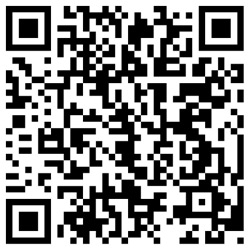Is your business using QR codes? Should you be?
Have you found yourself reading a magazine or strolling through a large department store with your smartphone in hand? By now, you’ve seen bar codes on all types of objects and advertisements. And you can also likely deduce that these are QR (Quick Response) codes, a 2-D barcode that can be scanned by a smartphone’s camera to transfer information. Based on the type of code it is, this may direct the viewer to a website—or even make a phone call.
QR codes may just be the inbound marketer’s most important hyperlink of 2012. But will they be effective in helping you market your business? A good understanding of your customer and how to use your code can help determine the answer to this question.
 As long as your customers have a smartphone, they can read any QR code. But despite the fact that the number of smartphone users is skyrocketing, there are still consumers who may not know how to read a QR code. This, along with the fact that a QR code contains a hyperlink to the content—and not the content itself—limits their impact.
As long as your customers have a smartphone, they can read any QR code. But despite the fact that the number of smartphone users is skyrocketing, there are still consumers who may not know how to read a QR code. This, along with the fact that a QR code contains a hyperlink to the content—and not the content itself—limits their impact.
Because QR codes are globally recognizable, QR marketing has great value for international clients. While the U.S. is just starting to move past the early adopter phase, countries like Japan, Italy and Germany have had significant growth in the QR code movement. But QR codes aren’t just for a wider audience.
The content of your hyperlink is arguably the most critical element of code usage. It doesn’t matter if you own a small company or a large one, if a viewer or potential client doesn’t have a reason to view your code, your efforts will be unsuccessful. Offering an incentive is key. Marketers can use their codes for tactics such as directing the viewer to their company website or contact information, contests and sweepstakes, video and product demonstrations, printable offers and coupons, or even surveys or educational materials.
After determining that your audience will find the message valuable, you must create the code (some free, popular sites include qrstuff.com and kaywa.com). The last step is placing it somewhere noticeable. QR codes are great at connecting the physical world to the electronic one, so placing them on business cards, print or marketing materials, t-shirts or billboards is arguably more effective than placing them in an e-mail signature or on a company website, as it is usually easier to click a link than pull out a phone and snap a photo of the code. Overall, it’s easy to argue that the more places you put them, the better the chances are of viewers using them.
You may have already known all of this, or you may already use QR codes and are looking for the next step up. Companies are now using their branding when designing them; adding colors, images and their logos inside the code to help it stand out from other companies. This is tricky and takes research, but it is well worth it and more visually stimulating if pulled off correctly. There is a certain amount of error correction built into a code, but it’s important to test your enhanced QR code before releasing it. A broken code will frustrate your audience and tarnish your brand’s credibility.
Consumers are using QR codes for a variety of reasons: to board a plane, sign up for a free appetizer, visit the website of an interesting or mysterious product in an advertisement…and the list goes on. One thing is clear though: buyers are sold on QR codes—is your business? iBi


